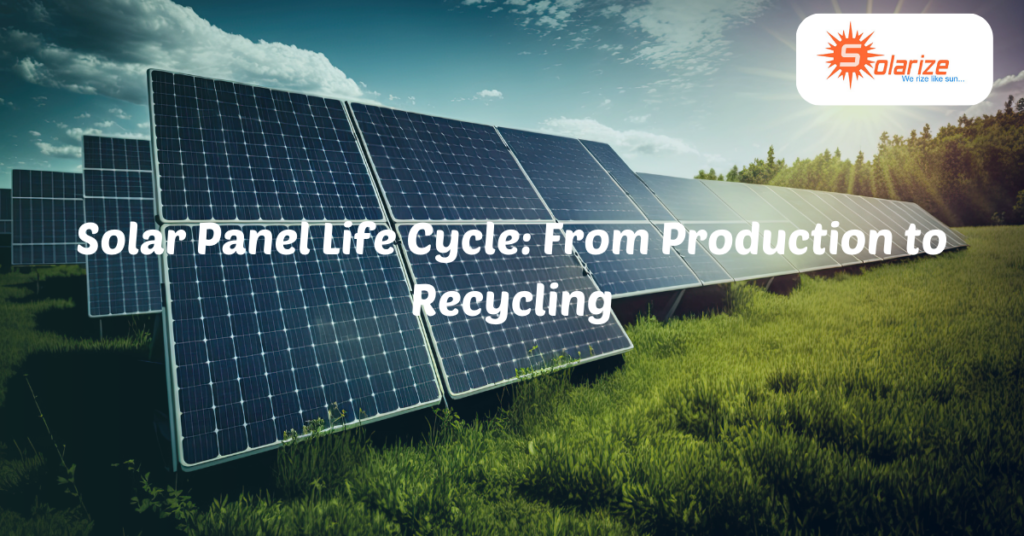Explore the solar panel life cycle from production to disposal. Learn about each phase, including environmental impact, efficiency, and sustainability, in our comprehensive guide.
Understanding the Life Cycle of Solar Panels: From Production to Disposal
Solar panels are the key for solar panel life cycle to using the renewable energy. It’s important to know their life cycle to understand their environmental impact. This article will cover their production, use, and disposal.
The Life Cycle of Solar Panels
The life cycle of a solar panel includes several stages:
1. Raw Material Extraction
Raw material extraction is the first step. The main materials are:
- Silicon: Comes from quartz sand and is crucial.
- Glass and Aluminum: Protect the panels and frame them.
- Other Metals: Copper and silver are used for wiring and conductive parts.
2. Manufacturing Process
The process involves several steps:
- Purification: Silicon is cleaned to boost efficiency.
- Cell Production: Silicon wafers are cut and made into photovoltaic cells.
- Panel Assembly: Cells are put on a backing, covered with glass, and framed with aluminum.
Table: Key Steps in Solar Panel Manufacturing
| Stage | Description | Environmental Impact |
|---|---|---|
| Purification | Silicon is refined | Uses a lot of energy |
| Cell Production | Wafers are made and put together | Creates waste |
| Panel Assembly | Cells are mounted and framed | Needs more materials |
3. Installation and Use
After making, solar panels are installed and start working:
- Installation: They’re put on rooftops or ground mounts. This includes securing them and connecting them to an inverter and electrical system.
- Operation: They turn sunlight into electricity. They last 25-30 years and need little upkeep.
Quote: “Solar panels are made to last long and work well, turning sunlight into electricity for many years with little care.”
4. End-of-Life and Disposal
When they’re done, solar panels must be disposed of or recycled:
- Decommissioning: They’re taken down from where they were installed.
- Recycling: They can be recycled to get back materials like silicon, silver, and aluminum. Many companies are working on recycling to lessen environmental harm.
- Landfill: If they can’t be recycled, they might go to landfills. This is not the best option because it can harm the environment.
Table: Solar Panel End-of-Life Options
| Option | Description | Environmental Impact |
|---|---|---|
| Recycling | Recovers valuable materials | Lessens waste and resource use |
| Landfill | Put in waste sites | Can cause environmental problems |
Key Takeaways
- Material Impact: Getting and processing raw materials hurts the environment.
- Durability: Solar panels are made to last 25-30 years.
- End-of-Life: Recycling solar panels is key to reduce environmental harm and get back valuable resources.
Conclusion
The life cycle of solar panels shows how crucial each stage is, from making to throwing away. Knowing this cycle helps us make smart choices about solar technology. The making and throwing away stages affect the environment, but recycling and better making processes are getting better.
Choosing solar panels is still a great way to cut down on carbon and support green energy.
FAQ
Q: How long do solar panels typically last?
A: Solar panels usually last 25-30 years. They keep working well during this time.
Q: What happens to solar panels at the end of their life cycle?
A: When they’re done, solar panels can be recycled to get valuable materials. If recycling isn’t possible, they might end up in landfills, which isn’t the best option.
Q: Are there any environmental concerns with solar panel production?
A: Yes, making solar panels uses a lot of energy and takes raw materials, which can harm the environment. But, the clean energy they make during their life makes up for it.


